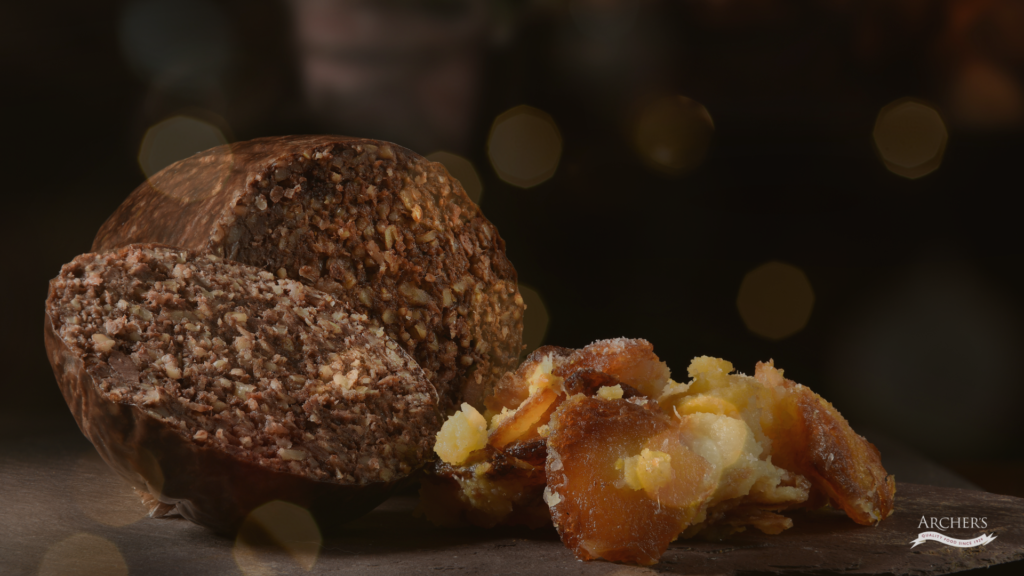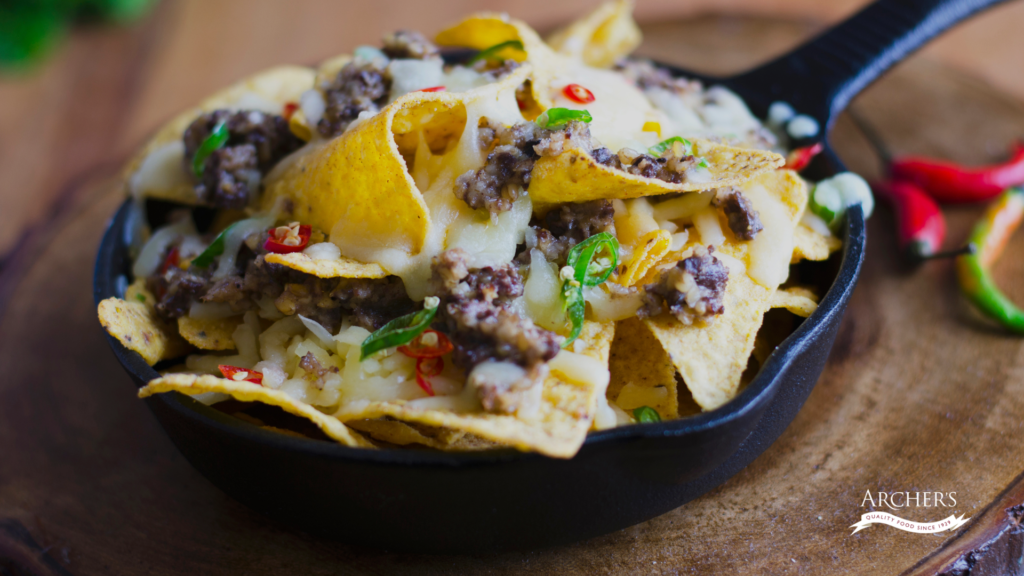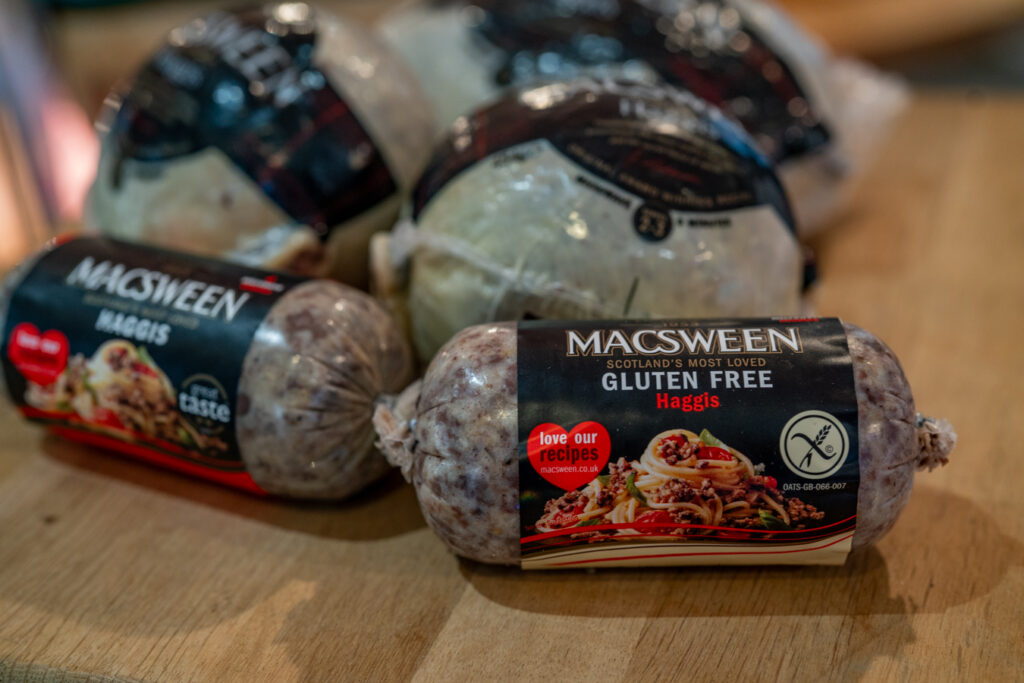Haggis History: Celebrating Scotland’s Iconic Dish for Burns Night
With Burns Night just around the corner, it’s the perfect time to dive into the rich history of haggis, Scotland’s national dish.
Here at Archers Butchers in Norwich, we’re passionate about everything meat and celebrating traditions that bring people together. Whether you’re a haggis enthusiast or a curious first-timer, you’ll find this humble dish has a fascinating story to tell.
The Big question that we’re always asked is… “What Is Haggis?”
Haggis is a savoury pudding made with minced sheep’s offal (heart, liver, and lungs), mixed with oatmeal, suet, and spices, all encased in a sheep’s stomach. Traditionally boiled, it’s served with “neeps and tatties” (mashed turnips and potatoes) and often paired with a dram of whisky. It might not sound glamorous, but haggis has a unique, hearty flavour that’s won fans worldwide.It has a very distinctive smell when being cooked

A Dish Born of Necessity
The origins of haggis date back centuries, long before refrigeration made preserving meat easier. Offal, being highly perishable, needed to be cooked quickly. Encasing it in a sheep’s stomach created a natural cooking vessel, making it a practical and efficient way to use every part of the animal. This no-waste approach aligns with modern sustainability values, making haggis an ancient but surprisingly relevant dish today.
Is Haggis Really Scottish?
While haggis is synonymous with Scotland, its roots may lie elsewhere. Similar dishes have been found in ancient cultures across Europe. The first known mention of a haggis-like recipe appears in a 1430 English cookbook, Liber Cure Cocorum. However, it was the Scots who embraced and refined it, making it a national treasure. Some historians even suggest the Vikings brought early forms of haggis to Scotland.
The Burns Night Connection
Haggis became immortalised thanks to Robert Burns, Scotland’s beloved national poet. His 1787 poem, “Address to a Haggis,” celebrates the dish as the epitome of rustic, honest food. Burns’ lyrical praise helped cement haggis as a central part of Scottish identity and established its role in Burns Night suppers. Every year on January 25th, Scots and fans of Burns worldwide gather to recite the poem, feast on haggis, and toast the Bard.
Fun Facts About Haggis
A Banned Delight in the USA – Traditional haggis has been banned in the United States since 1971 due to a ban on sheep’s lung for human consumption.
Despite this, haggis enthusiasts have found creative ways to make lung-free versions to enjoy stateside.
A Global Phenomenon – While haggis is quintessentially Scottish, variations exist worldwide.
French and Italian charcuterie traditions include dishes like boudin noir and , which share similar ingredients and techniques.
The Haggis Animal Myth – A long-standing joke in Scotland is that haggis comes from a wild creature called the “Haggis,” said to have legs of different lengths to help it run along hillsides.
It’s a whimsical myth that continues to amuse visitors and children alike.

Record-Breaking Haggis – The world’s largest haggis weighed a staggering 1.01 tonnes and was created by Hall’s of Scotland in 2014. It fed over 2,000 people!
Why Haggis Deserves the Spotlight
Beyond its history, haggis is a celebration of culinary ingenuity. It transforms humble ingredients into something delicious, highlighting the importance of resourcefulness in cooking.
Its robust flavour and texture make it versatile, too. Have you tried haggis bonbons, haggis-stuffed chicken, or even haggis Nacho’s

Haggis at Archers Butchers
At Archers Butchers, we’re proud to stock high-quality haggis to help you celebrate Burns Night in style. We’re especially excited to offer a selection of Macsween Haggis, a brand known for its award-winning, authentic recipes. Whether you’re hosting a traditional supper or experimenting with new recipes, we’ve got you covered. And if you’re unsure how to cook or serve haggis, our friendly team is here to offer tips and advice.
How to Cook for the Best Results
Cooking haggis is simple, but following these steps will ensure it’s perfectly moist and flavourful:
Traditional Boiling Method
Leave the haggis in its casing and wrap it in foil to prevent splitting.
Place it in a large pot of simmering water. Do not let the water boil vigorously, as this can cause the casing to burst.
Cook for approximately 45 minutes per pound (450g). For a standard 1lb (450g) Macsween Haggis, this will take about 45 minutes to 1 hour.
Oven-Baked Method
Remove the haggis from its casing and place it in an ovenproof dish.
Cover it with foil to retain moisture and bake at 180°C (350°F) for 1 hour, stirring occasionally.
Microwave Method
If you’re short on time, slice and place it in a microwave-safe dish.
Cover and heat on high for 4-5 minutes, stirring halfway through.
Whichever method you choose, make sure the haggis is piping hot all the way through before serving. Pair it with traditional neeps and tatties, and don’t forget a generous splash of whisky sauce for the perfect Burns Night feast!
Join the Celebration

This Burns Night, let’s raise a glass to the traditions it represents. Whether you’re Scottish by birth or just in spirit, it’s a dish that brings people together, celebrating history, poetry, and great food.
Visit Archers Butchers in Norwich to pick up your haggis and make this Burns Night one to remember.

